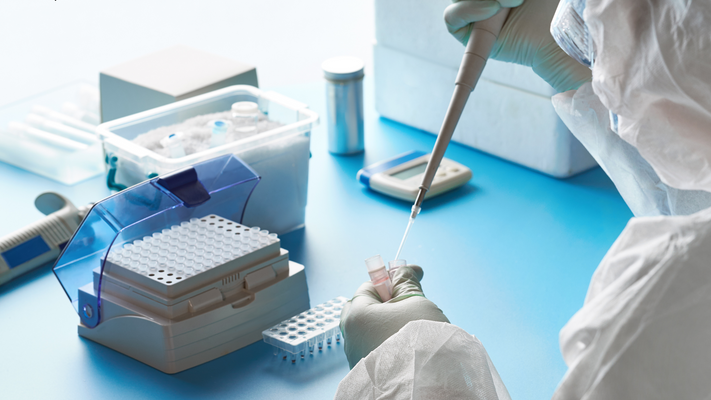
Introduction
Before the invention of plasmid kits, isolating plasmid DNA was an arduous and slow process. Now in 2024, there has never been a faster way to manipulate and extract DNA. The market for plasmid kits hit a record high of $1 billion dollars in 2020, and it is projected to grow to $1.5 billion by 2025.
Throughout this guide, we will discuss the definition of plasmid kits, the types of kits available on the market, how to choose the right plasmid kit, and common troubleshooting issues.
Table of Contents
- Section 1: What Are Plasmid Kits?
- Section 2: Types of Plasmid Kits
- Section 3: How to Choose the Right Plasmid Kit
- Section 4: Troubleshooting Common Issues
- Section 5: Frequently Asked Questions (FAQ)
- Section 6: Conclusion
Section 1: What Are Plasmid Kits?
Plasmid kits are tools used by researchers to extract, manipulate and purify DNA from bacteria. Some kits provide gravity-flow tips, while others provide treatments for cell lysates.
Elements for plasmid kits include the following:
- A Lysis Buffer: This buffer splits open cells of bacteria and frees the precious DNA
- A Neutralization Buffer: This buffer balances out the DNA after the lysis process
- Binding Buffer: This buffer makes it easy for DNA to bind to a matrix or membrane.
- Wash Buffer: This buffer eradicates all contaminants and impurities from the bound DNA. It prevents the DNA from getting corrupted.
- Elution Buffer: This buffer retrieves purified plasmid DNA. This buffer streamlines the overall DNA extraction process.
- Spin Columns or Membranes: Spin columns segregate DNA from cellular debris and contaminants. This protects the DNA from becoming littered with unwanted waste.
- Collection Tubes: Collection tubes are used to scoop up purified DNA and keep it safe.
- RNase A: RNase A is utilized to break down contaminants found in the RNA.
- Protocol: A step-by-step guide to the overall purification process for DNA and RNA extraction.

A High-Speed Plasmid Mini Kit from IBI Scientific
All of these elements work together to form a plasmid kits. These resources make it easier for researchers and others that are looking for a rapid purification for DNA or RNA. Plasmid kits are a critical part of molecular biology because they can isolate and purify DNA. They can also be used in PCR sequencing, genetic engineering and molecular cloning.
Section 2: Types of Plasmid Kits
-
Plasmid Extraction Kits:
- Purpose: Plasmid extraction kits are used to purify and extract plasmid DNA from bacteria cultures in an efficient manner. Some examples include: Miniprep, Midiprep, and Maxiprep IBI plasmid kits.
-
Plasmid Purification Kits:
- Purpose: Plasmid purification kits isolate and purify only certain types of DNA. Some examples include: GeneJET Plasmid Midi Prep Kit by ThermoFisher
-
Specialized Plasmid Kits:
- Specialized plasmid kits are made for certain applications of plasmid DNA purification and isolation. These kits are tailored to meet specific research needs beyond standard purification and extraction features. Some examples include: Endotoxin-free kits, high-copy plasmid kits, and even customizable kits.
Section 3: How to Choose the Right Plasmid Kit
So with all this being said, the question still remains:
Which plasmid kit is right for you? Well, it depends on your goals and needs.
If your yield needs call for up to 50 µg, a mini plasmid kit would be the proper fit for you. If the yield calls for much more, such as 200-500 µg, you may want to consider a midi plasmid kit. For yields consisting of 1-1.5 mg, the maxi plasmid kit would be ideal. Depending on your overall needs, the purity of the DNA will be what you should consider when purchasing a plasmid kit, especially if you are applying it by means of transfection or DNA sequencing.
Section 4: Troubleshooting Common Issues
Often times, when utilizing plasmid kits, users will come across a low yield. Usually, this could be caused by a cell lysis error or because there is an inadequate amount of bacteria. To fix this, simply increase the amount of bacteria used and change the lysis conditions, such as the temperature or time. You may need to double-check the mixing process, or use another kit that fits your needs.
Another common issue is that of impurities. Sometimes, a user will complete the purification process only to be left with a few contaminants, such as RNA, proteins or residual salts. This may have been caused by following the steps incorrectly for purification or using a poor washing technique. To fix this, make sure to carefully follow the step by step instructions enclosed in the plasmid kits, along with double checking that you have purchased the right one. Make sure to prepare buffers properly and do your best to evade cross-contamination.
Section 5: Frequently Asked Questions (FAQ)
-
What is a plasmid kit?
- Plasmid kits are tools utilized by researchers to purify and extract and DNA or RNA from bacteria. Some kits provide gravity-flow tips, while others provide treatments for cell lysates.
-
How do I choose the right plasmid kit?
- The purity of the DNA will be what you should consider when purchasing a plasmid kit. Please refer to section 3 for more details.
-
What are common issues with plasmid kits?
- Common issues include: Low yields, contaminants and impurities. See section 5 for more details.
Section 6. Conclusion
In this basic guide, we covered the definition of plasmid kits and its elements, different types of kits, choosing the right plasmid kit, common troubleshooting issues. If you're looking for the best plasmid kits on the market, with high yields and high purity, you've come to the right place. Please click here to choose from our collection of powerful plasmid kits.


